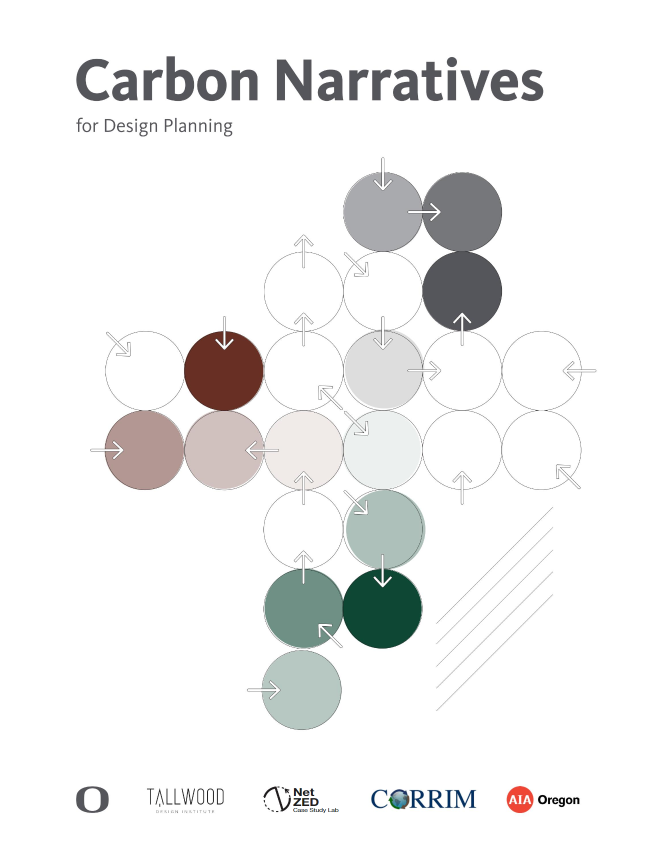Carbon Narratives for Design Planning
Research Team:
Mark Fretz, UO College of Design
Project Duration:
2020-2023

Abstract
Embodied carbon in building materials and construction activity represents a significant fraction of the global greenhouse gas (GHG) emissions causing climate change. Concrete, iron, and steel alone produce approximately 9% of annual global GHG emissions and the combined embodied carbon emissions from the building sector currently produce 11% of annual global GHG emissions. This trend, if unabated, is anticipated to be responsible for almost half of total new construction emissions between now and 2050. Unlike operational carbon emissions, which can be reduced over time with building energy efficiency upgrades and the use of renewable energy, embodied carbon is locked in place as soon as a building is built. The UN Emissions Gap Report 2019 continues to find a persistent gap between the GHG emissions targets required to mitigate climate change and current state.
Introduction
Closing the carbon gap will require a systems approach employing multiple mitigating strategies.
One material that has been gaining favor in the design community to address carbon reduction goals is mass timber. Much research has already been conducted highlighting ways in which mass timber can reduce whole-building embodied carbon, such as through its decreased weight requiring less structural concrete in foundations or transportation emissions, for example.
However, in whole building lifecycle assessment models (WBLCA) comparing carbon content in mass timber structural systems against concrete or steel, mass timber has shown varying results depending on forestry practice and inclusion of biogenic carbon into the model. Furthermore, two common LCA tools that designers use to evaluate their designs, Tally and Athena, can vary widely based on assumptions for end-of-life and biogenic carbon, such as reuse-recycling pathways and continuity in forest land remaining forest land. These WBLCA case study models have established a complicated carbon sustainability narrative that has left many designers asking the question, “Is wood good?” with fractured responses selectively chosen to advance one’s own organizational interests.
Despite the complicated narrative, designers and their clients are embracing mass timber for its multiple positive attributes; however, would like more clarity and uniformity in the embodied wood carbon narrative so that they can make the best-informed decisions when specifying material during design planning. Akin to the sustainable farm-to-table agricultural movement in our food supply, designers and their clients are relishing the forest to frame parallels for sustainably growing our buildings. To address topics for which the AEC industry urgently needs more clarity, specifically: impacts of biogenic carbon-based on proper accounting, forestry management practices and carbon storage in the ecosystem, end-of-life material assumptions, and stand rotation timelines, this project will use peer-reviewed scientific data and invited transdisciplinary expertise and perspectives in academia, industry, government and environmental advocacy from North America and Europe to gather for a symposium and follow-up work sessions highlighting the gaps, alternative narratives, and consensus regarding mass timber embodied carbon. The University of Oregon will facilitate a common narrative appropriate for design planning and will focus on not only the Pacific Northwest region but include other regions in North America and Europe since mass timber and forest products are transacted globally for building construction. The deliverables will include a synthesis of the best available evidence/panelist information into a set of educational materials with documentation on topics drawn out of the symposium. This work will contribute to educating students, architects, engineers, builders, and developers on making informed choices regarding modern timber construction.

